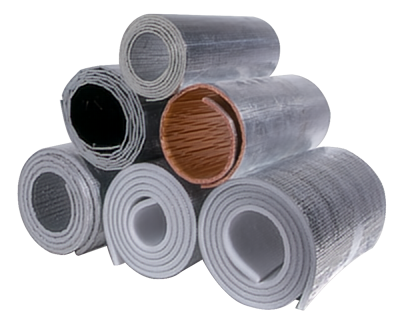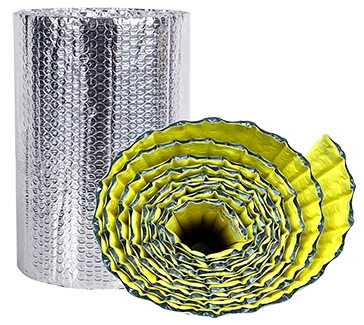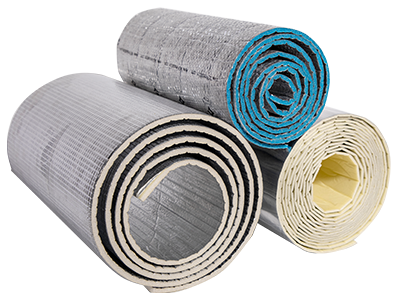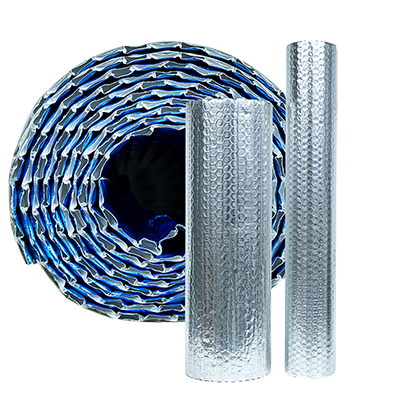 Tel: +86 188 2689 9458
Tel: +86 188 2689 9458
 Tel: +86 188 2689 9458
Tel: +86 188 2689 9458
source:Industry News release time:2024-05-17 Hits:
![]() Thermal insulation materials play a vital role in modern engineering and technology. They can effectively reduce the speed of heat transfer, thereby achieving the effects of heat preservation and energy saving in various applications. Understanding the working principles of thermal insulation materials will help us better select the types of thermal insulation materials and develop more efficient construction methods.
Thermal insulation materials play a vital role in modern engineering and technology. They can effectively reduce the speed of heat transfer, thereby achieving the effects of heat preservation and energy saving in various applications. Understanding the working principles of thermal insulation materials will help us better select the types of thermal insulation materials and develop more efficient construction methods.

The working principle of thermal insulation materials is to reduce the efficiency of the three main heat transfer modes of heat conduction, heat radiation and heat convection by using low thermal conductivity materials and pore structures, so as to achieve the purpose of slowing down heat transfer. Let's first understand the three main modes of heat transfer:
Heat Conduction
Thermal conduction is the process of heat transfer from a high-temperature object to a low-temperature object. It is essentially a heat transfer phenomenon caused by the thermal movement of microscopic particles (such as atoms, molecules, etc.) inside the object. The rate of heat conduction is significantly affected by the thermal conductivity of the material. For example: Metals transfer heat quickly due to their high thermal conductivity. In contrast, insulating materials such as wood or plastic have low thermal conductivity and therefore slow the transfer of heat.

Insulation materials usually have low thermal conductivity, which makes the ability of heat transfer inside them weak. This is mainly due to the molecular structure and composition characteristics of insulation materials. For example, polymer materials and insulating silicate materials have much lower thermal conductivity than high thermal conductivity materials such as metals. In addition, insulation materials often contain air layers, such as fiber gaps in materials such as glass fiber and rock wool, and bubbles in foam plastic materials. These structures can effectively slow down the transfer rate of heat.
Heat radiation
Thermal radiation refers to the phenomenon that an object radiates electromagnetic waves due to its temperature. It is widely present in nature and artificial environments. For example, the radiation of the sun, the radiation of flames, and the infrared radiation of objects are all thermal radiation. All objects above absolute zero can generate thermal radiation, and the higher the temperature, the greater the total energy radiated.

Thermal insulation materials often reflect most of the thermal radiation by coating their surfaces with materials with high reflectivity such as metal or special ceramics, preventing it from entering the interior of the material, thereby maintaining the stability of the internal temperature.
Heat radiation
Thermal convection refers to the process of heat transfer caused by the relative displacement of the fluid parts due to the macroscopic movement of the fluid (liquid or gas), and the mixing of hot and cold fluids. Thermal convection can be forced convection driven by external forces, or it can be natural convection caused by density changes caused by temperature differences.

Insulation materials often use porous structures that can capture and store a lot of air, reducing the possibility of heat convection by reducing air flow. At the same time, some insulation materials use layered structures to effectively hinder the occurrence of heat convection by increasing the path length of heat transfer.
In summary, the working principle of thermal insulation materials involves the delicate regulation of multiple heat transfer methods such as heat conduction, heat radiation and convection. By selecting appropriate materials and designing structures, thermal insulation materials can effectively reduce heat transfer and protect the stability of internal temperature.
https://www.toplinepackaging.com/flexible_packaging_film_roll/#99
Read recommendations:
Eco Friendly Plastic Mylar Pouch Stand Up 50ml 100ml 200ml 250ml Custom Aluminum Spout Pouch
reusable Snack food bag Processing
Let's learn about upright bags
What are the twelve structural types of commonly used packaging bag films
Popular recommendation
Laminated Aluminum Foil Zip Lock Bag Stand Up Pouch /Matt White Foil Pouch /Zip Lock Coffee Bag
China Factory Baby Complementary Food Spout Pouch Baby Food Fruit Puree Bag With Spout Packaging Bag
Aluminum foil bag
zip lock bag for coffee Production
grinds coffee pouch price
super pouch tool bag wholesale
packaging spout pouch wholesaler
biodegradable spout pouches manufacture
Flexible packaging film roll manufacturers
packaging spout pouch
What are the advantages of plastic packaging bags
What are the advantages of octagonal sealed packaging bags
How to deal with the discoloration of food packaging bags?
Use more paper food packaging bags to take care of the environment.aluminum foil bag large manufactu
Anti -static packaging bag.aluminum foil bags for cooking
Packing bag sealing brittle and brittle break how to do?
Aluminum Foil Bag's applicable range is wide.aluminium coffee bag Factory
Advantages of Juice Packaging in Boxes and Bags
Application of Aluminum Foil Ton Bag.aluminum foil bag price
Flexible Packaging: The Smart Future of Bag-in-Box Solutions
Why is bagged milk in BIB boxes becoming increasingly popular?bag in box price
spout pouches Production.How to choose a suitable vacuum packaging bag
Teach you how to choose a plastic packaging bag?valve plastic coffee bag maker
Development of packaging bag industry
What are the advantages of bagging edible oil in a box.liquid packaging bags
Reasons for Aging of Food Packaging Bags and Preservation Techniques
The value of vacuum PE bag in life
What problems should be paid attention to in the high barrier test of water vapor transmittance and
The characteristics and application of composite packaging bag
The impact of food packaging preservation on consumer lifestyles.bag for food packaging